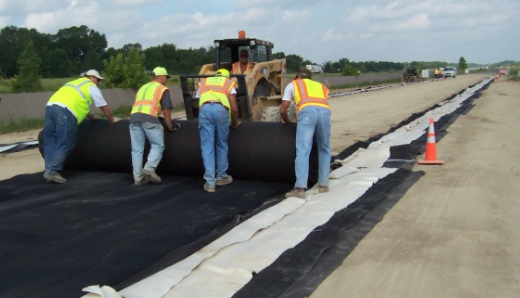- Understanding the Role of Geomembrane Liners in Waste Management
- Innovations in Geomembrane Liners for Water Management
- Geomembrane Liners: A Comprehensive Guide
- The Future of Geomembrane Liners in Civil Engineering
- Geomembrane Liners: Enhancing Landfill Stability
Manager:
WhatsApp:+86 177 0135 2670
Tel:+86 177 0135 2670
Email:marketing@okorder.com
Address:3rd Floor, No.2 Building, No.1 Sanlihe Road
How are geotextiles used in civil engineering?
Geotextiles have become indispensable in the field of civil engineering, offering versatile solutions for a wide range of applications. These materials, such as polyester geotextile installations in bulk, find themselves playing key roles in projects that vary from road construction to erosion control. Among others, they are extensively used for slope protection and stabilization within natural landscapes by offering innovative solutions to mitigate these challenges. Thus, this paper seeks to examine the different ways through which geotextiles are employed in civil engineering; it will thus focus on wholesale geotextile procurement, polyester geotextiles, geotextile slope protection, geotextile slope stabilization and significance of filament geotextiles within these applications.

Wholesale Geotexitle Procurement: Meeting Project Demands
In any civil engineering project cost effectiveness and efficiency take center stage. This is where wholesale geotexitle procurement comes in handy. Buying large quantities of geotexitles ensures a constant flow while reducing costs hence enabling managers optimize their budgets without sacrificing quality. Wholesale suppliers of Geosynthetics have diversified their product mix so as to meet diverse requirements within Civil Engineering projects. Therefore buying such materials as bulk can facilitate logistics around road construction or simplifies soil reinforcement programs for instance.
Polyester Geotechnical Fabrics: Strength and Durability
Among other types of fabrics that can be used in the construction industry today, Polyester based textile material has unique strength qualities and durability aspects making it outstanding among all these other synthetic fibres competing with natural fibres like cotton or silk.. These textiles made out of high-quality polyester fibers posses superior tensile strength than others available in the market thereby being resistant to environmental factors like UV radiation or chemical exposure among others associated with them .With respect to applied science uses; they are commonly utilized for ground hardening, propping of retaining structures and in some cases erosion control. It is also worth noting that these types of materials are known to have lasting abilities hence always considered suitable for applications requiring long-lasting services.
Geotextile Slope Protection: Mitigating Erosion Risks
Erosion is a major challenge faced by civil engineers when carrying out such construction projects especially in areas with steep slopes or soils prone to instability. Geotextile slope protection measures have been found to help mitigate this risk and protect important infrastructure. This involves putting up erosion resistant barriers in the form of specialized geotextile materials on the slopes that prevent surface run off from eroding these embankments or retaining walls. The use of geosynthetics for slope protection systems ensures sustainable environmental approaches to erosion control reducing the need for traditional concrete structures but encouraging sustainable land management practices.
Geotextile Slope Stabilization: Ensuring Structural Integrity
Slope stabilization is essential for maintaining stability and safety of terrain features like embankments, cut slopes, and natural slopes., being a key component in slope stability schemes where it gives reinforcement so as to resist soil motion and maintain the integrity of sloping surfaces . Incorporation of geotextiles into slope designs, enables better distribution of loads thus making it possible for soil stability improvement which consequently reduces the likelihoods of landslide as well as failure associated with erosion.. Examples include highway embankments railway slopes and sea cliffs; techniques used in stabilizing such terrains may involve using geotextiles.
Filament Geotexitle: Enhancing Performance and Versatility
Civil engineering applications can benefit from the use of filament geotextiles, which have continuous threads as a result of how they are manufactured. They are designed to be stronger and more resistant to punctures compared to their earlier counterparts and thus can be used in strenuous situations such as landfill lining systems, drainage channels, and pavement support. Filament geotextiles perform well in terms of durability and dimensional stability, which allow them to provide sustainable solutions over time. Their surfaces are flat while their structures even facilitate faster installation with consistent outcomes under various environmental conditions.

Harnessing the Power of Geotextiles in Civil Engineering
The field of civil engineering has fast embraced geosynthetics as must-have tools for addressing many challenges faced by engineers today. From procuring mass amounts of geotextile material at once through the use specialized materials like polyester and filaments, construction engineers apply these materials across a range of projects to improve efficiency, life span and overall sustainability. Geotextiles are vital for slope protection projects but also play a role when it comes to stabilization or erosion control among other things that shape infrastructure development nowadays. As technology advances and environmental consciousness increases, the position occupied by these fabrics within civil engineering will also continue changing leading progress plus innovation within the constructed environment.”






